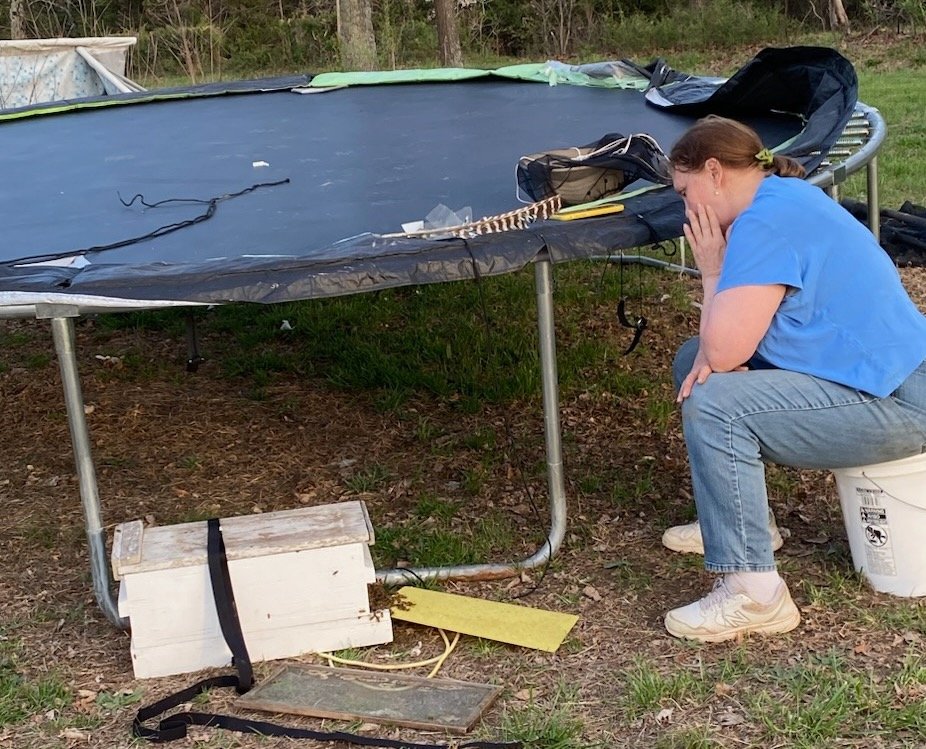Bees in Cracked Corn
/For a short time in winter, my honeybees raid my bird feeders for cracked corn dust.
Bees in Bird Feeder Cracked Corn
Every winter for a short period of time during warm days, my honeybees get into trouble. Well, actually, it's more like they get into my bird feeders looking for dust from the cracked corn I add to sunflower seeds.
It's usually after December 21, when winter officially begins. Daylight starts to get longer and the queen bee starts her countdown to spring. The longer daylight triggers the queen to start to lay eggs to increase the colony's population, which means worker bees need to find protein to feed the new babies.
My bird feeders are safe until sunny winter days start to pop up over 45F. I know my girls are working on the nursery when I start to see, a few bees at first, around the edges of the hanging feeders, where the leftover cracked corn is left. They are easy to spot, they look like flying globs of caramel in the sunshine.
Honeybees start to work the leftover cracked corn at the bird feeder's edge for the corn dust.
If you look closely, you can see the bees diving into the seeds, sometimes only their back sides sticking up in the air in the middle of the sunflower seeds and corn.
I wasn't sure at first what they were after until I started to see their leg pollen sacks packed as they rummaged through the seeds.
This honeybee has a pollen sack on her leg packed with goodies from the bird feeder.
One morning, I also found a good dozen bees moving inside the bird feeder. I couldn't see how they could get out so I carefully dumped the seeds into a plastic lid so they could get out and rummage to their pollen sacks' content.
Having the seeds and corn on a straight surface also meant they could more easily pack away the corn dust they wanted to take back to the hive as a protein food source for the nursery.
Sunflower seeds and cracked corn from the bird feeder temporarily on a plastic lid on the ground.
These are some of the bees that were stuck inside the bird feeder covered in corn dust without any way to get out.
Can you see the bees all covered in cracked corn dust? They were inside the bird feeders.
After I gently dumped them out, at first they seemed dazed and were moving very slowly. After a few minutes out of the confined area, they started walking around until enough cracked corn dust fell off of them so they could fly. And guess what they were carrying.
This honeybee was inside a bird feeder and had enough room to pack her pollen bags.
This bee walked into my hand with her leg pollen sacks full of the corn dust she had picked up inside the bird feeder. I waited for her to get cleaned off enough so she could fly off with her stash, then put the bird seed and bird feeder away.
It was the right time. The next day, although temperatures were warm and sunny, not a bee was at the bird feeder.
The rush to the cracked corn dust was over. The bees were starting to find real pollen somewhere else in my garden.
Charlotte

















